Dr Andrew WinnardLecturer in Clinical/Musculoskeletal Biomechanics; Lead for the Aerospace Medicine Systematic Review Group; Chartered Physiotherapist; Faculty of Health and Life Sciences, Northumbria University 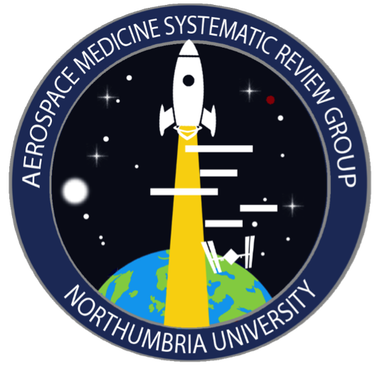 This was a question that the European Astronaut Centre space medicine office asked the Aerospace Medicine Systematic Review Group (AMSRG). With space agencies planning missions beyond low Earth orbit, in spacecraft that might not be as easy to exercise inside as the International Space Station, this question is becoming more relevant. While it is clear that countermeasures are needed to maintain muscle during microgravity exposure, there were questions such as ‘should we really be going to the Moon without exercising?’; ‘can we safely have pauses in countermeasures during Earth-Mars transits?’; and ultimately ‘how long can humans go in microgravity, without exercising, before the muscles seriously decondition?’. 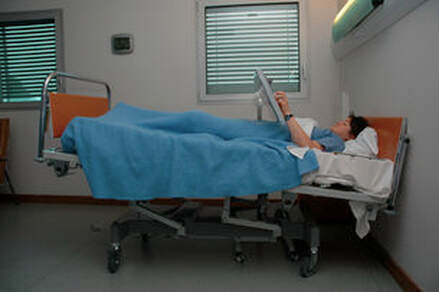 Bedrest study image: © ESA Bedrest study image: © ESA There appeared to be some information available in the research base but no clear and transparent synthesis existed on which to make evidence based medical decisions. The AMSRG, led by Prof Nick Caplan, Dr Rochelle Velho and myself, based at Northumbria University’s Aerospace Medicine and Rehabilitation Laboratory, is all about working with spaceflight operations to provide high quality, evidence based medical guidance and, therefore, we took these questions on readily. It was determined that if data from inactive/no intervention control groups within any study done with astronauts or bed rest participants could be extracted, it would provide the evidence based information on which to inform the questions being asked. The team worked for almost two years, screening 754 potential studies, before extracting data from control groups of 75 individual included sources, to calculate 922 individual effect sizes, making this the largest review the AMSRG has conducted to date. All the included studies were from bed rest, ranging from 60-120 days, with mostly high risk of bias (using Cochrane’s risk of bias tool) and typically scoring 4 out of 8 for bed rest quality (using AMSRG’s bed rest quality tool). Across all the studies the team found that moderate deconditioning effects (effect size ≥0.6) occur between 7-15 days, with large deconditioning effects (effect size ≥1.2) occurring by 28 days. Based on this, it seems that a 5 day Earth-Lunar transit period is probably safe to complete without exercise, at least for the skeletal muscle outcomes. However a Mars transit, that is likely to be 200+days, needs to counteract muscle deconditioning if the crew is to arrive and be able to function in a gravity loaded environment. Additional consideration was given to ‘worst case scenarios’, such as if there were a crew member more susceptible to low gravity induced muscle changes, for which the team used the most extreme negative end of the confidence intervals as a model. In these cases, a large deconditioning effect could be reached by 7 days and then even the travel time to the Moon could potentially become problematic. However, this model is rather crude due to large confidence intervals caused by the typical low sample sizes in human spaceflight research, and individual effects are difficult to determine in a way that is easily transferable to astronauts. Over the whole evidence base, there was great variety in outcome measures and time points evaluated across studies, along with limited data for all outcome measure subgroups, with research gaps highlighted in the published review’s results tables. No patient reported outcome measures of minimal clinical worthwhile changes were established that would help provide a more patient-centred approach to space medicine. This has been a common finding in AMSRG reviews. While space agencies require astronaut simulating bed rest studies to be done to set standards, it might be useful to try and establish a list of core outcome measures that would benefit human spaceflight operations, to become a foundation for patient-centred space medicine and to standardise the data presented to the field as a whole.
Dr Joaquim Ignácio S da Mota Neto / Dr Thais RussomanoPsychiatrist, Federal University of Pelotas, Brazil / Founder & Scientific Director, InnovaSpace The brain is the prime and most complex organ of the human body and within it takes place the sophisticated phenomena that define us as human beings, enabling recognition of and interaction with our surroundings. Basic and primitive survival functions pass through the different formations and axes of the Central and Peripheral Nervous System, but far beyond this are the many other functions that differ in complexity and high degree of neural connectivity, such as those performed by the limbic system, containing the hypothalamus, hippocampus and amygdala. These important structures are responsible for integrating and giving context to aspects of emotions, memories and learning, thus building our cognitive capacities. Therefore, it is essential to maintain the functionality of these cerebral regions that permit the acquisition, storage and recall of information, as together with the cerebral cortex, they are fundamental for several aspects of personal, social and professional performance. The perception of potential fragility of these intricate brain structures is inevitable, when faced with extreme and unknown situations, such as one might encounter on a manned trip to Mars. The effects of different space features, such as radiation or microgravity, may pose a threat not only to the ability of an astronaut to perform both simple and complex tasks, but also to control emotions or react in an adequate manner to a new environment in which access to old memories may become essential. 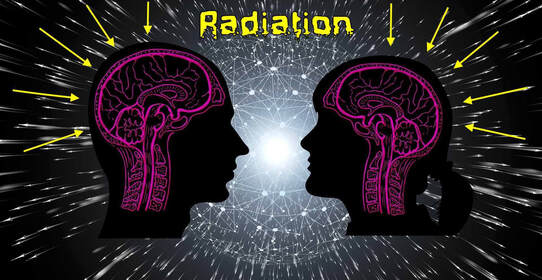 A recently published article by Mike Wall of Space.com presented the issue of space radiation and how it can affect the brain function and psychological behaviour of animals, in research using a new scientific approach. The study conducted by Munjal Acharya & Janet Baulch of the University of California and Peter Klein of Stanford University, exposed mice for the first time to a continuous and chronic low-dosage radiation (1mGy/day). The idea of the research team was to mimic a manned trip to Mars, during which astronauts would be exposed to 6 months of low-dosage, deep-space radiation. This type of protocol differs from those previously used, in which animals were submitted to high-dosage radiation over short time periods. The space environment is very unique and is full of radiation in the form of galactic cosmic rays, particles of high energy and charge, and solar particle events, which differ from the low-LET (X- or g-rays) radiation that is predominant on Earth. Radiation is known to affect humans in several ways, in three distinct phases: acute, latent and chronic effects. Chemical mediators are first released from damaged cells, particularly from bone marrow, lymphoid tissues and the gastrointestinal tract, leading to symptoms, such as nausea, vomiting and malaise. The latent phase is free of symptoms as it represents the time between the initial cell injury and manifestation of cell renewal. Chronic effects include a decrease in cell count, and increase in the risk of developing cancer, and degenerative and infectious diseases. The negative impact of radiation on the Central Nervous System (CNS) has been considered relatively minor, as the CNS is formed of few actively dividing cells, which provides it with a type of natural resistance. Nonetheless, some studies have demonstrated that space radiation could potentially produce undesirable effects on the brain, including a decrease in function and neurodegeneration. The results from the mice study would seem to corroborate the hypothesis that radiation can indeed cause deleterious effects on the CNS, perhaps due to the longer 6-month period of exposure to the low-dose radiation. These findings, published in the Society for Neuroscience's open-access journal, eNeuro, suggest that mice exposed to radiation had alterations in their hippocampus, the part of the brain responsible for learning and memory, and the prefrontal lobe of the cortex, dedicated to cognitive functions and social relationships. The neurological pathway has yet to be defined, but it is already of serious concern to the space scientific community, as such alterations could cause impairment in psychological performance, especially during stressful and critical situations, like those that could easily be experienced during an interplanetary trip, which is exactly the occasion when clear and immediate decision-making or problem-solving responses are needed! Under normal conditions on Earth, the human cognitive and emotional processes can struggle to perform well enough to cope with the demands of everyday life, and therefore, the subjective and objective adversities of adapting to a long-duration trip to another planet could be a huge challenge. Even if we are able to control each one of the many physical or psychological variables that could impact on our relationship with the space environment, aerospace science still needs to deal with poorly understood aspects related to the interaction of executive memory with emotions, with experts having highlighted that what we remember is never the same as what was originally set to be fixed in our memory - the material undergoes change in the storage process as each individual adds personal characteristics to the stored element.
The peculiarities of the human brain and its crossovers between the acts of feeling, thinking, planning and performing have already led humanity to evolve, overcoming innumerous obstacles from the Stone Age to the Modern Era. However, even in a place with no palpable barriers, like the vastness of space, there will be invisible elements, such as radiation, that could be powerful enough to delay or impede human omnipotence and omnipresence in the exploration of the Universe. Adriana Bos-MikichDepartment of Morphological Sciences, ICBS, Federal University of Rio Grande do Sul, Brazil 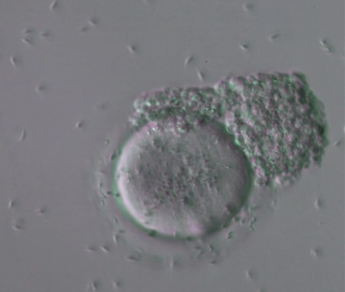 Human sperm and oocyte Image: Nilo Frantz Human Reproduction Centre, Porto Alegre Human sperm and oocyte Image: Nilo Frantz Human Reproduction Centre, Porto Alegre Amazing as it may seem, as the number of spaceflights has increased and life aboard space stations has become a reality, the effects of high levels of space radiation and microgravity (micro-G) on mammalian reproduction are still largely unknown. Therefore, the study of reproduction in space is a very important subject for the future of space missions. Research conducted with experimental non-mammal animals, such as sea urchins, fish, amphibians, and birds has concluded that micro-G does not prevent animal reproduction. However, mammalian reproduction presents specific features, such as ovulation, sperm and oocyte (egg) transit in the reproductive tract, embryo attachment, implantation and placentation, which are specific to mammalian reproduction and cannot be studied in non-mammal species. Surprisingly, little information is available today on how these processes occur in conditions of microgravity. 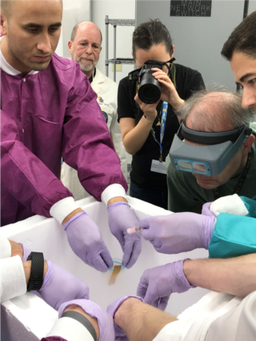 KSC Researchers preparing Micro-11 experiment sperm samples for launch to the ISS. Credits: NASA KSC Researchers preparing Micro-11 experiment sperm samples for launch to the ISS. Credits: NASA A first problem requiring investigation is the supposed difficulty that sperm and egg cells may have to travel along the female reproductive tract to accomplish natural fertilization under micro-G conditions. A project with 100% relevance is NASA’s Micro-11 research, which aims to examine putative motility alterations in human and bull sperm during spaceflight. “Micro-11 provides fundamental data indicating whether successful human reproduction beyond Earth is possible, and whether countermeasures are needed to protect sperm function in space” (NASA). Rapid directional sperm motility is a key factor for successful fertilisation under natural circumstances. Sperm cells need to swim up the uterine cervix, travel through the uterine cavity and fallopian tubes to meet and fertilise the oocyte. To accomplish all these tasks, human sperm respond to chemoattractant signals, to temperature gradient, and to fluid flow. These guidance mechanisms occur naturally along the female reproductive tract and are important for the sperm-egg encounter and for natural fertilisation to occur in the fallopian tubes, but will these mechanisms be sufficient in micro-G? Experimental studies with mice have revealed impaired male germ cell generation under microgravity conditions. Of concern are alterations seen in the physiology of testicular cells observed under conditions of simulated microgravity, which may obscure the starting point of mechanisms that lead to long-lasting tumorigenic processes. However, a recent research has shown that the deleterious effects of microgravity on germ cell proliferation, oxidative metabolism and autophagy may be, at least partially, prevented by the presence of antioxidants in the germ cell culture medium. This finding represents an important contribution to the current knowledge of microgravity effects on germ cell tumour metabolism and development. According to estimates, nearly one in six couples worldwide seek out assisted reproduction technologies for having a child. Thus, it is expected that fertility assistance may also be necessary in space due to naturally occurring fertility problems or due to micro-G induced infertility conditions. A report from the 35th annual meeting of the European Society of Human Reproduction and Embryology recently revealed that frozen human sperm retain their viability and fertilising capacity in outer space, similar to sperm samples stored in liquid nitrogen under Earth’s gravity conditions. This represents a reassuring finding, particularly when considering the importance of sperm cryostorage for fertility preservation, such as in the case of cancer patients who may lose their reproductive potential due to oncological treatments. It also allows us to hypothesise that donor intra-uterine insemination may represent a viable option for having a child under the micro-G conditions found in space stations. The more complex assisted reproduction technology (ART), “in vitro fertilisation” (IVF), developed by Sir Robert Edwards and Dr. Patrick Steptoe, allows fertilisation to occur outside of the body, i.e., outside its natural tubal environment, in a plastic petri dish, giving rise to the term “test-tube” baby. Its main purpose is to promote fertilisation when the natural encounter of sperm and oocyte is not possible, as is the case of women presenting blocked uterine horns. In summary, oocytes are first collected from the ovaries, (performed by transvaginal ovarian puncture and aspiration) and placed in a petri “IVF” dish containing a culture medium that mimics the tubal micro-environment. The male partner produces a sperm sample, which is prepared for mixing with the oocytes, after which the IVF dish is maintained in a warm incubator (37oC) in a laboratory for fertilisation to take place. The sperm must be able to swim and penetrate the oocyte membrane for fertilisation to be accomplished, and to assist this they are placed close together to facilitate their interaction and fusion. The resulting embryos remain in the incubator for up to six or seven days, before being transferred to the womb. However, fertilisation will not occur under natural or even IVF conditions when the ejaculated sperm do not present rapid directional motility in a condition called asthenospermia, a common cause of unsuccessful reproduction among infertile couples. To help these individuals generate their own descendants, the ART “intracytoplasmic sperm injection” (ICSI) technique was developed by Dr. Gianpietro Palermo. ICSI allows fertilisation to occur even when the sperm sample is poor in terms of number and/or motility. 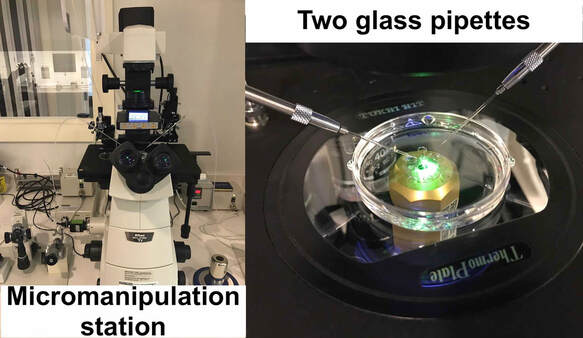 The technique uses a micromanipulation station fitted to an inverted microscope equipped with contrast optics that enable three-dimensional visualisation of living cells. The ICSI micromanipulation equipment consists of two glass pipettes; a holding pipette to fix the oocyte and an injection pipette to introduce the sperm into the oocyte cytoplasm (see below video). The ICSI insemination strategy allows fertilisation to occur even under unfavourable conditions, and it can perhaps be hypothesised that this technology may be of assistance in the case of sperm motility deficiencies in outer space, where micro-G conditions may prevent natural, unassisted sperm-egg fusion. Undoubtedly, much more research needs to be performed before we can erase the large question marks that remain as to the likelihood of natural fertilisation taking place in mammals under micro-G conditions, and if required, how effective current assisted reproduction technology would be when using the ART setup and equipment developed on Earth. With talk of future Moon and Mars colonisation and space hotels in the coming decades, there will come a time when human reproduction under microgravity conditions will need to be better addressed if life is to be sustained in off-Earth environments.
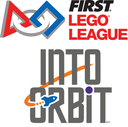 The First Lego League (FLL) is an annual international tournament involving teams of young people aged 9-16 years. It introduces a scientific and real-world challenge for teams to focus on, research, and create solutions to identified problems, and includes a robotics challenge to perform a set task with a programmable robot constructed from LEGO electronic and mechanical components. This year, over 40,400 teams competed in regional, national and international tournaments with their ideas, including team AC/DC/EG from Brazil, who had a very successful competition and were kind enough to give us an insight into their FLL Into Orbit experience in this year's competition, in their words below: 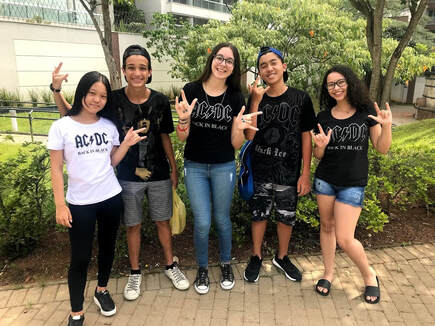 "The AC/DC/EG team was created on 07/12/2007 to represent the Eduardo Gomes College in São Caetano do Sul, Brazil in the FIRST LEGO League tournament. The team name is formed from the name of the rock band AC/DC together with EG for Eduardo Gomes, and so far, we have participated in competitions at 11 State, 11 National and 7 International stages. The 2018/2019 FLL - INTO ORBIT tournament has been sensational for us. Our team began taking shape in May 2018, and underwent some changes, beginning with 8 team members and finishing up with 5 members - Eduardo, Felipe and Sophia (from the beginning), and later joined by Gabriella and Fernanda. And it was with this team of 5 that our coach Reginaldo and mentors Giovanni and Giovanna reached the end of the competition. The official launch of the FLL tournament took place on August 1st 2018, so we used the time from May to August to research several problems related to this year's theme by visiting universities, watching films and videos, reading books, magazines and theses, and talking to experts in the field. At the beginning of September, we talked with Aerospace Medicine & Space Physiology specialist Dr Thais Russomano, presenting to her everything we had studied so far, and it was during one of our initial conversations that we realised there was a problem faced by astronauts, which is: WASHING IN SPACE We already had the FLL competition documentation in this initial period of our discussions so we began to compare the problems raised to make sure they fitted in with the competition guidelines. In all, we analysed 14 problems: A phrase we heard that marked our work was by NASA space scientist Robert Frost, who said: "When several people are trapped in an enclosed space, HYGIENE IS OF GREAT IMPORTANCE." So, having done our analysis, we chose the subject of how to wash the body in space and defined our problem: THE INEFFICIENCY OF WASHING IN MICROGRAVITY And we asked: HOW CAN WASHING BE MADE MORE EFFICIENT IN MICROGRAVITY? We continued studying, raising new points and discussing them with Dr Russomano. We looked at the ways of washing that have previously been used and the current method of washing in space. ⇨ A sponge with soap and water, used during the Gemini and Apollo missions. ⇨ A shower on the MIR Space Station that wasted a lot of time, water and energy. ⇨ The Russian kit, which consists of a pre-moistened wipe and can be used for up to 3 days, using less water. ⇨ The NASA Kit, which is a cloth moistened with soap and water. We noted that, to be ideal, washing should be able to deal with dead skin cells, sweat, oiliness, odour, and bacteria and fungi!  DryBath by Ludwick Marishane DryBath by Ludwick Marishane We had a lot of ideas, including a kind of human jet wash that used little water – but this and other ideas were discarded as our objective was for something low-cost, water-free and lightweight, that would occupy very little space on a spacecraft. It was in thinking about this goal that we discovered a gel called DryBath, created by Ludwick Marishane, mostly for use on the African continent and in places with a scarcity/lack of water. Ludwick’s idea is that water should only be used for drinking and cooking, and for washing it can be replaced by the gel. With just 15ml of the gel, it is possible for an adult to wash without using water, and without the need to remove the gel from skin, as it is moisturising. All of our team tried using the gel, including our coach. The benefits of the gel in comparison with the existing solutions are enormous, as besides dispensing with the need for water for washing, there is a gain in transport weight and the gel occupies a minimum of space on a spacecraft. However, we needed to know its viability for use in space, so we talked to Chemical Engineer Matheus Messias, who confirmed the gel is non-flammable, and with Dermatologist Oswaldo Cipullo, who said the gel fulfils all the requirements for body washing and can be used daily. Nonetheless, the current gel packaging makes it unfeasible for use in space, as it generates a lot of waste. Therefore, after some brainstorming and tests, we developed a new storage and application system utilising a 2-litre urine collection bag filled with gel, calculating that each explorer would need 3 such bags to cover a 1-year period. Each bag is fitted with a valve connector to guarantee the pressure required to transport the gel into a syringe-type applicator, which allows its controlled delivery to the body. This system for gel storage and use saves important resources, enables fast application, requires no cleaning of the equipment, has no loss, and needs no repairs. Currently, 4 litres of water is used in space per wash, whereas, with this quantity of gel it would be possible to have 266 washes, meaning water will no longer be needed for washing the body and can be used for something else within the spacecraft. The cost of the gel and the system is 1610 Brazilian real (approx. £310) per person for a year. Therefore, it is possible to take something that was designed for use on Earth and adapt it to make its use possible in space, rather like the tortillas of astronaut Rodolfo Vela, as quoted in the FLL Into Orbit competition guidelines." The InnovaSpace team would like to congratulate the AC/DC/EG team and everyone who supported them for their success and the enthusiasm and joy they brought to the tournament stages! Congratulations also go to the thousands of teams from around the world for their hard work, curiosity, research and enthusiasm - YOU ARE ALL STARS!
The InnovaSpace team in the last years have been involved on a couple of occasions with the innovative activities of Guerilla Science, as they seek to connect the general public with science in new and interesting ways. The benefits of yoga on Earth are well known, and it is certainly an activity that would improve the health of anyone practicing it regularly. The Guerilla crew have come up with a series of great videos linking dynamic yoga stretches with the effects of microgravity on the human body and mind, assisted by five expert space scientists, one of which is InnovaSpace's very own Space Life Sciences Expert Dr. Lucas Rehnberg, who explains about Space Walks and the problems astronauts face when conducting maintenance tasks on the outside of the International Space Station. Get out your yoga mats, exercise your body, and stretch your mind learning fascinating facts about the human body in space! Dr. Lucas RehnbergInnovaSpace Space Life Sciences Expert. Recently I had the pleasure to attend the world’s largest aerospace medicine conference in Las Vegas, the 90th Annual Aerospace Medical Association (AsMA) Conference. This was my second AsMA (@Aero_Med) meeting and it didn’t disappoint. As a doctor training in the UK with an interest in space medicine, the AsMA conference is a great opportunity to present work, meet other space medicine enthusiasts as well as individuals from different disciplines – but all with a shared passion for space and aerospace. The thought behind this blog was to serve as a taster of what AsMA has to offer to those thinking about pursuing a career in this field or who want to gain an idea of how to become involved. So, this was my experience of the conference: Day 1 - Monday
Started with an incredible opening session commemorating the 50th anniversary of Apollo 11 and the moon landing. The panel was moderated by Dr Mike Barratt, astronaut and flight surgeon, and consisted of some giants from the Apollo missions: - Dr Charles Berry & Dr Bill Carpentier, Apollo flight surgeons. - Gerry Griffin, Apollo flight director. The session opened with a specially commissioned video dedicated to the Apollo 11 landing in 1969 and the lead-up time. It was an excellent reminder of what was achieved when a nation came together and set the tone for the discussion, reflecting on their experience of Apollo 11 and the Apollo missions. Some of my favourite moments of this session include when Dr Berry told a great story of stopping President Nixon from having a meal with the Apollo 11 crew the night before their launch, including a letter he wrote to President Nixon apologising for this. Then flight surgeon Dr Carpentier told us what flight surgeons learnt from the Mercury and Gemini missions, before starting on the Apollo missions. Dr Carpentier also spoke about some of his training, including practicing jumping from a moving helicopter in order that he could give medical assistance to the landing Apollo crews. Gerry Griffin spoke of the pressure of the Apollo missions and the relief mixed with excitement when the Apollo 11 crew set foot on the aircraft carrier after their landing. He also spoke about the Apollo 1 tragedy, what we learnt from all the Apollo missions, and how this will help human spaceflight now that we are focusing on going back to the Moon. Closing comments from each of the panel followed a similar theme, summed up best by Gerry Griffin, "We’ve gotta get back to the Moon. It’s been 50 years since we’ve done it...we need to get our mojo back." Mary UpritchardInnovaSpace Admin Director With another year now drawn to a close, I thought it would be interesting to look back on the two very successful InnovaSpace Kids2Mars events that took place in 2018 involving questions asked by children to crew members of Mars analogue missions, one with the MDRS Crew 185 in the Utah desert and the other with the Austrian Space Forum’s AMADEE-18 mission in the Dhofar desert in Oman. In summary, 53 children from 33 different countries from around the world had the opportunity to ask anything they wanted about travelling to and life on Mars, and very interesting answers came back from analogue astronauts and crew members who spent their time isolated in desert regions, especially chosen for their similarities to the planet Mars. Analogue astronauts on this type of mission in general have little spare time, as they are involved in many research activities, so we knew we could not bombard them with a mountain of questions. This in fact also linked well with our aims for the Kids2Mars project, which was to involve children from as many different countries as possible – quantity of countries rather than quantity of questions. With our tagline of Space Without Borders, this aspect was of prime importance, so an end result of 33 countries was very satisfying, especially so considering the diverse range of nations involved, such as Bolivia, Bulgaria, Iceland, Mongolia and Nepal. In fact, we had questions coming from countries in 6 of the 7 continents, just missing out on Antarctica, which for obvious reasons is a little more difficult! It was interesting to hear how the name of the planet Mars, named after the Roman god of war, was pronounced in the various languages. Certainly, the sound of the word was the same or very similar to the English pronunciation in the majority of cases, however, there were a few exceptions, such as from China, Japan, Nepal, Libya and Indian Tamil. We have extracted the word Mars, where mentioned, from all of the children’s questions and with the invaluable help of our two collaborators from Italy, Fabio Pinna and Mario Mollo, created a short video – we hope you like it! One thing that has become obvious from all the Kids2Mars activities we have conducted is how much the subject of space and space travel arouses curiosity, and how much the young people involved in the lectures and creative pursuits have done so with great enthusiasm and interest. In our view, this is exactly why outreach activities linked to Mars or the Moon or astronauts, in fact anything involving space, can be used as a tool to capture the attention and interest of children, motivating them to give more consideration to the STEM areas of education. Although the adults of today are laying and securing the foundations of human life in space, it is our children who will build on this to become the Space Generation, and perhaps in time, even future Mars colonisers!
Mary UpritchardInnovaSpace Admin Director
The InnovaSpace team send their wholehearted congratulations to the Chinese National Space Administration (CNSA) for the landing today (Thursday, 3rd January 2019) of their unmanned Chang'e-4 space probe on the far side of the Moon, the first spacecraft to ever land on the ‘dark side’. The probe landed exactly on target in the South Pole - Aitken Basin, which is the Moon's largest and oldest recognised impact crater.
A small lunar rover, called Yutu 2 or Jade Rabbit 2, descended from the lander onto the surface of the Moon, sending the first panoramic images of a landscape that has never been seen from the surface before. All being well, the rover will explore the terrain and perform a number of tasks, including the measurement of ground composition and the use of ground-penetrating radar to probe below the surface.
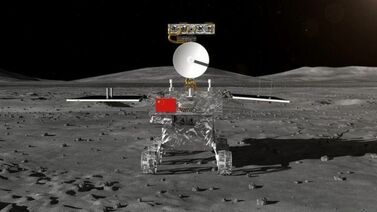 Chinese lunar rover Image credit: EPA/CNSA Chinese lunar rover Image credit: EPA/CNSA
The first lunar low-frequency radio astronomy experiment will also be conducted, together with an exploration for evidence of water, and an attempt to grow potatoes in a mini biosphere, among other tasks, all of which could reveal much new and valuable information about the Earth's only permanent natural satellite.
"Since the far side of the moon is shielded from electromagnetic interference from the Earth, it's an ideal place to research the space environment and solar bursts, and the probe can 'listen' to the deeper reaches of the cosmos," said Tongjie Liu, deputy director of the Lunar Exploration and Space Program Center for the CNSA.
China became only the third nation to carry out a lunar landing, after the United States and Russia, when it landed a previous lunar rover, Chang’e-3, on the near side of the Moon in December 2013. But Chinese ambitions go much further than landing rovers on the Moon, with reports that they aim to put astronauts on the Moon by 2036 (no human feet have stepped on the lunar surface since 13th December 1972, following the end of the American Apollo missions). Chinese sights are also focused on Mars, with its first Mars probe scheduled to carry out orbital and rover exploration around 2020, and further plans for a fully operational permanent space station by 2022.
Well done to everyone at the CNSA and we look forward to hearing more on the progress of the Chang'e-4 mission!
Explanatory point: The far side of the Moon is also known as ‘the dark side’, which is in fact an inaccurate description, as both hemispheres of the Moon receive just as much sunlight as each other. However, the far side can never be seen from Earth due to the Moon rotating at the same speed that it rotates around the Earth, which results in us always seeing the same side. In fact, the two sides of the Moon are actually quite different in appearance, as can be seen in the below images.
Dr. Kushal MadanCardiac Rehabilitation Consultant, Dept. of Cardiology, Sir Ganga Ram Hospital New Delhi India  Here on Earth our arterial blood pressure values are set by the pumping action of our heart and by the resistance of our arteries to blood flow, known as peripheral resistance. Haemodynamics, or the flow of blood in our circulatory system can be summarised as:
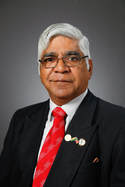 Blog author, Dr. K Ganapathay is a Past President of the Telemedicine Society of India, Neurological Society of India & Indian Society for Stereotactic & Functional Neurosurgery. Emeritus Professor, Tamilnadu Dr MGR Medical University, he has 43 YEARS of clinical experience. He is on the Board of Directors of Apollo Telemedicine Networking Foundation and Apollo Telehealth Services – the largest and oldest multi specialty telehealth network in South Asia, an Advisory Board member of InnovaSpace, and recognised as a staunch advocate par excellence in promoting telehealth. For more details see www.kganapathy.com. I am thankful to Prof. Thais Russomano, Space doctor, for rekindling my dormant interest in outer space. 11 years ago I started taking my grandson to the terrace in my house and repeatedly showed him the moon and said "I want you to work there as a doctor". Who knows? This may actually happen in my life time.
As a 'Made in India', totally indigenous product, who has worked only in India, I am absolutely thrilled to learn about INDIA’S FIRST MANNED SPACE MISSION - Gaganyaan, scheduled for launch in December 2021. 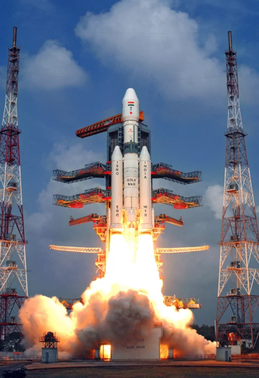 GSLV Mk III Lift Off Image: ISRO GSLV Mk III Lift Off Image: ISRO The mission, which was announced by Prime Minister Narendra Modi in his Independence Day speech, is set to be a turning point in space history, as it will make India one of only four countries in the world, after Russia, USA and China, to launch a manned space flight. The plan involves sending three Indians into space for 5 to 7 days on a Low-Earth-Orbit mission (altitude of 300-400 km). At 27,000 km/h, a spacecraft completes an orbit around the Earth every 90 minutes. Costing within 1.5 billion US$, this 40-month project will employ 15,000 individuals, including 13,000 from industries and 1,000 from academic institutes – and of course, Indians!! Vyomanuts (Indian astronauts) for this mission are likely to be selected from 200 shortlisted Indian Air Force pilots, with just 4 being selected and trained. The best among the superhuman test pilots will get the golden ticket. On the seventh day after launch, the crew module will re-orient and separate itself from the service module, landing on Earth within 36 minutes, in the Arabian Sea, close to Ahmedabad. 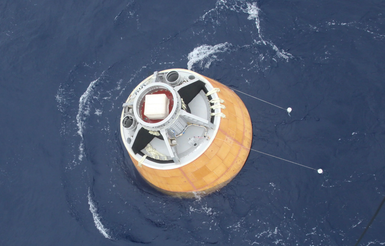 Crew module splash down Image: ISRO Crew module splash down Image: ISRO One of the six largest space agencies in the world with the largest fleet of communication (INSAT) and remote sensing (IRS) satellites, ISRO has already developed most of the technologies required for manned flight. In 2018, it performed a Crew Module Atmospheric Re-entry Experiment and Pad Abort Test for the mission, while the Defence Food Research Laboratory (DFRL) has already worked on producing space food, and has been conducting trials on astronaut G-suits |
Welcometo the InnovaSpace Knowledge Station Categories
All
|
UK Office: 88 Tideslea Path, London, SE280LZ
Privacy Policy I Terms & Conditions
© 2024 InnovaSpace, All Rights Reserved
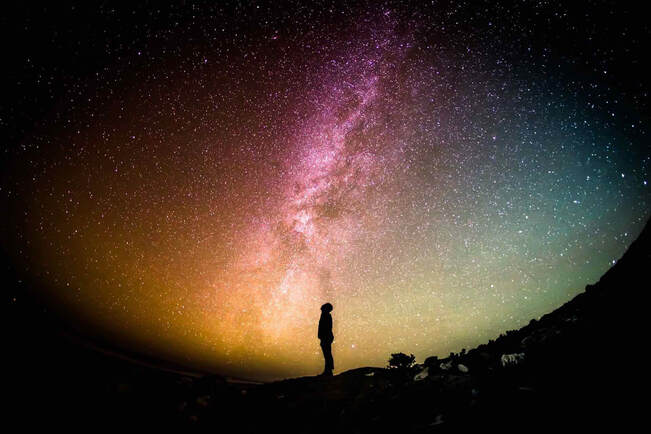

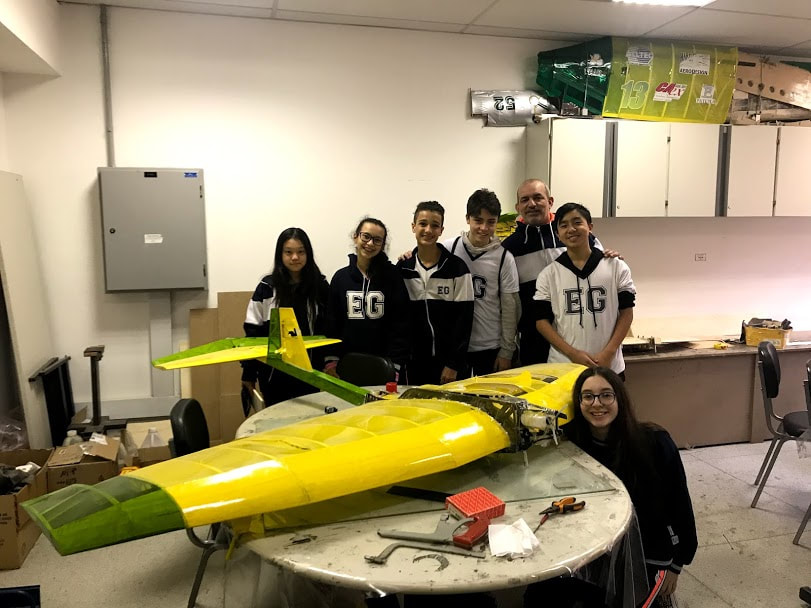
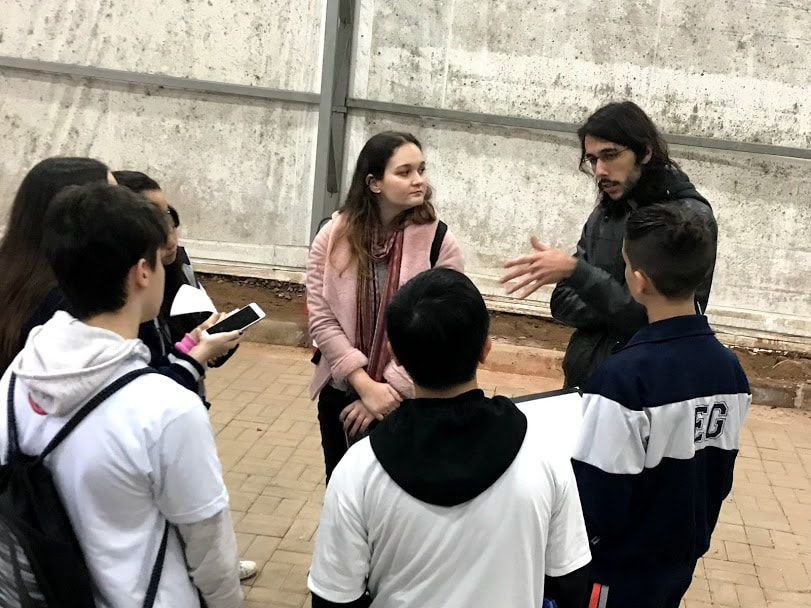
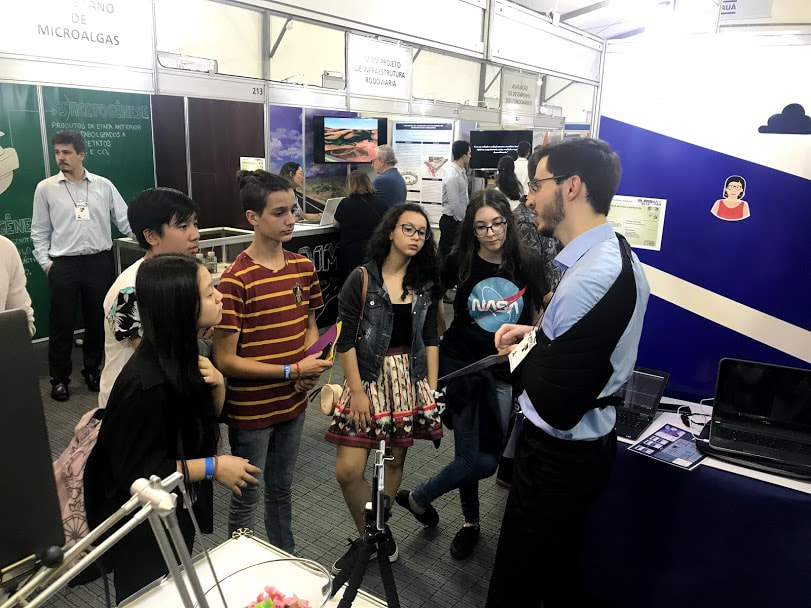
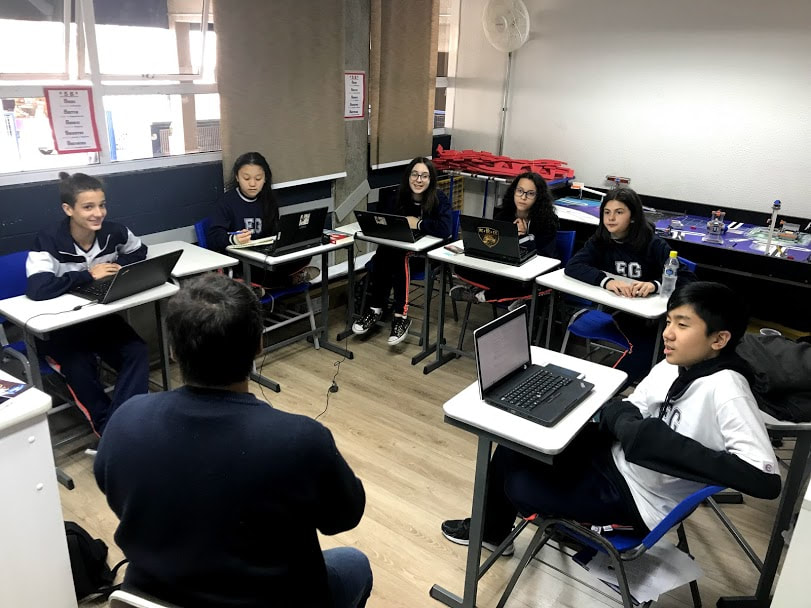

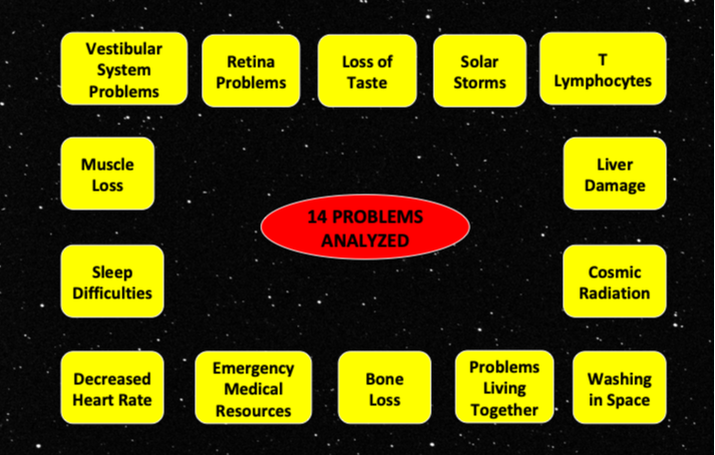
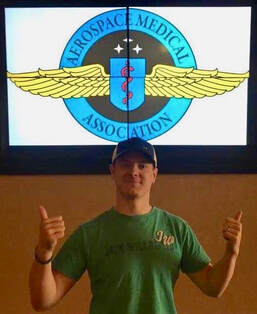


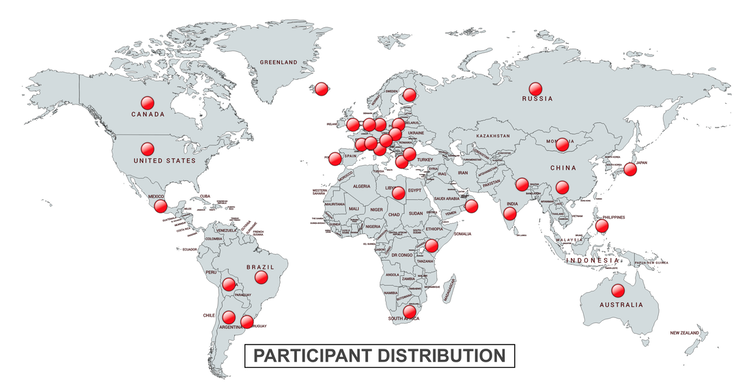
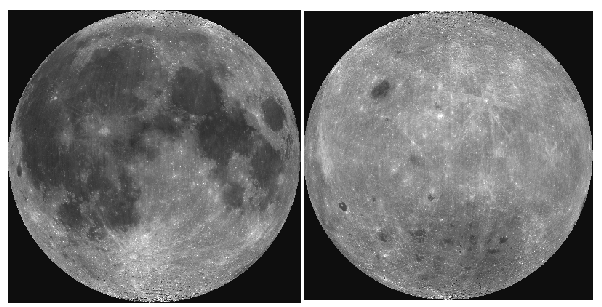
 RSS Feed
RSS Feed